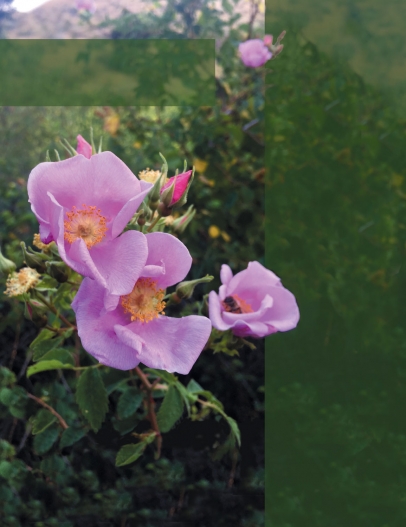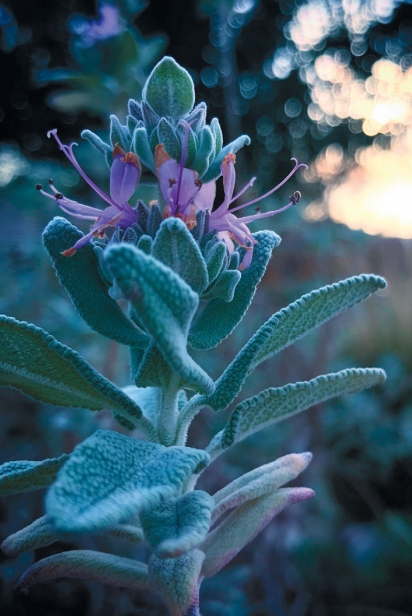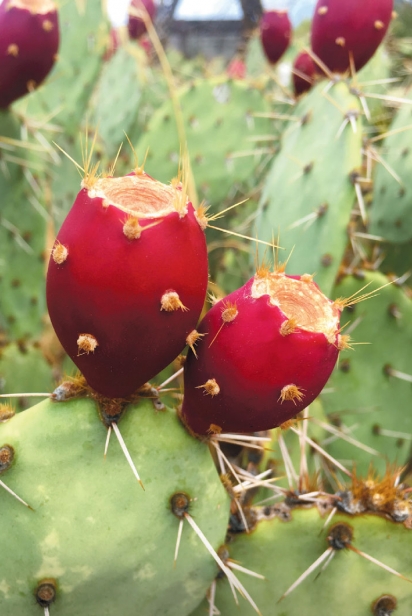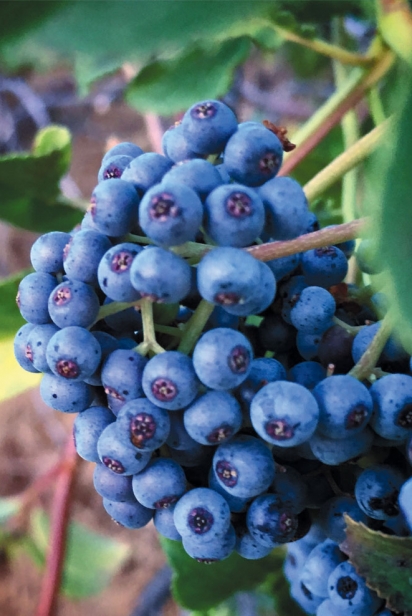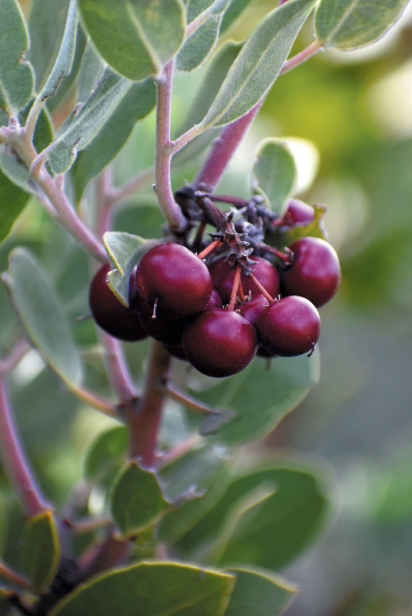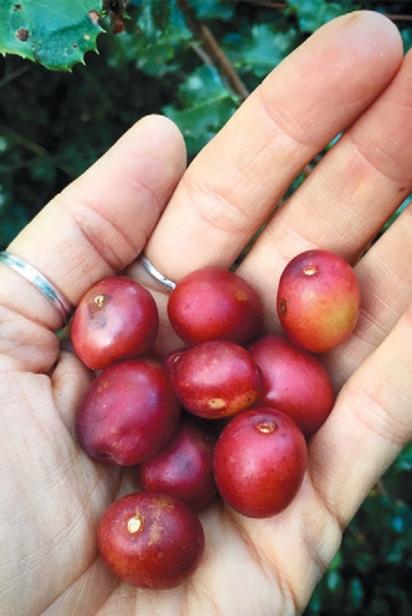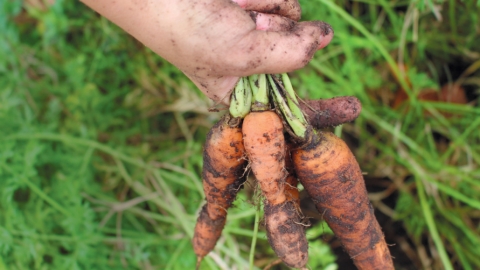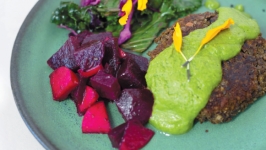Foraging Finds in Ventura County
As I wander our local trails during the summer, the air is heavy and thick with the volatile oils of aromatic herbs warmed by the afternoon heat. The delicate, tender greens and elusive mushrooms of spring have long since passed, and we are left with the edible rewards of elderberries, hollyleaf cherries, prickly pear fruit, manzanita berries, rose hips, currants and gooseberries. In short, summer foraging brings out the sweetest offerings our land provides.
Foraging is a way to connect and deepen our relationship with our environment, cultivating an intimate integration of the natural cycles, gathering ingredients at the peak of ripeness. Sometimes these treasures make it to my kitchen and other times they are enjoyed at the moment of harvest—the ultimate forest-to-taste-buds experience.
As a year-round forager, I am honored to bear witness to the natural progression of the plants throughout the seasons and how they are affected by each year’s weather. A creative forager can always find something in any environment. It is a way to be a part of nature without the need to control or force it into what we think it should be or to fit our needs. It’s about adapting to our environment and moving with the flow and rhythm of the earth.
I love to add wild foods to my menus— not only for the exotic appeal, but for the nutritional benefit as well. Throughout my research over the years, I have found that wild foods contain more vitamins, minerals and antioxidants than cultivated foods found at the supermarket. Our not-so-distant ancestors thrived on a wild-food diet. The Environmental Working Group notes that over 40% of adults are deficient in vitamins A, C, D, E, magnesium and calcium. These vitamins and minerals missing in our contemporary diets are abundant in wild foods, which are increasingly found to have medicinal and therapeutic uses as well. Wild foods are excellent sources of antibacterial and antifungal compounds, along with higher levels of cancer-fighting antioxidants and polyphenols, which may prevent or reduce tumor growth and ward off many modern diseases.
During the heat of summer, our abundant local black sage (Salvia mellifera) and purple sage (Salvia leucophylla) may still be flowering in some areas but most are going to seed, producing a local superfood akin to the chia seed found in the health food stores. Black sage is known for its indigenous use as a pain reliever, while purple sage can be used in place of culinary sage in the kitchen for a more complex flavor.
Summer kicks off the long season for Barbary figs or tunas—the bright red fruits found on the prickly pear cactus (Opuntia ficusindica). These delicious and sweet fruits have a flavor reminiscent of watermelon and strawberry. Incorporate them into refreshing drinks, treats and desserts. They may combat high cholesterol, Type 2 diabetes and may have anti-cancer properties. The cactus’s fleshy pads, known as nopales, are commonly used in Mexican cuisine. Nutritionally, the fruits have excellent levels of antioxidants and carotenoids, useful in maintaining a healthy diet.
The abundant berries of the elder trees (Sambucus spp.) are reaching their peak during mid to late summer. This widespread tree or shrub is found growing in our local chaparral regions—and throughout most of North America—and has been used by many cultures as both a valuable food and an excellent natural medicine. The flowers, which in some areas may still be blooming at this time, make a delicious floral infusion or cordial. The florets can also be battered and fried into a fritter, infused into vinegars or steeped in hot water as a tea to combat headaches and sinus congestion. The berries have long been known as a powerful remedy for cold and flu viruses that will help to shorten the duration of illness while also lessening the severity of symptoms. Recent studies also suggest their therapeutic ability for managing diabetes.
Wild roses (Rosa spp.) are found flowering in spring and early summer, while the fruits (known as rose hips) follow in mid to late summer and fall. Both the flowers and fruits contain vitamin C and can be used in a variety of preparations to help boost immunity. The flowers are particularly pleasant when added to beverages, as well as a fragrant and nutritious garnish. Rose hips can be used medicinally as a vitamin C supplement and infused as a tea, syrup or jelly.
In the same family as roses, hollyleaf cherries (Prunus ilicifolia) make a refreshing treat right off the tree and can be used similarly to conventional cherries: in jams, jellies, preserves, fruit leathers and other desserts. In contrast to typical cherries, these have large seeds, which can also be processed and used in addition to flour in breads or other baked goods. Wild cherry bark has long been used as a cold remedy, specifically to suppress and reduce coughs.
Manzanita berries (Arctostaphylos spp.) appear abundantly in late summer and can be easily preserved for later use. Some species have fruits with a sticky coating that readily attracts dirt and debris, while others do not and are easier to clean and process. Manzanita can be incorporated into dishes that complement a sweet-and-sour flavor reminiscent of apples, which may help explain its common name of “little apple” in Spanish. They are a tasty addition to drinks and can be ground into a flour to add to baked goods.
BEFORE YOU GO
If you’re interested in foraging, arm yourself with these five tips before heading out:
Location: Not all open space is legal to harvest from. Be sure to obtain permission from private land owners and avoid harvesting illegally on public lands, trails or nature preserves. Take into consideration the location of harvesting, ensuring that it is away from contamination and pollutants. I recommend harvesting from what may already be growing in your or your neighbors’ backyards. Or consider planting a garden of native plants to harvest.
Identification: Cross check a plant with different sources before harvesting and consuming. An expert will be able to point out the differences between edible plants and poisonous look-alikes.
Harvest: Only harvest one of every 10 plants of that species. Do not uproot a plant only to harvest a few leaves, and do not harvest if there is only one plant of its kind in an area. Take care in harvesting by pruning the plant to encourage more growth. The next person to come by should not be able to tell that a forager was there.
Preparation: Some wild foods must be prepared, processed or cooked thoroughly before consuming. Do your research, as each plant has different requirements.
Learn: I recommend consulting books by Los Angeles–based survivalist teacher Christopher Nyerges—Foraging California: Finding, Identifying, and Preparing Edible Wild Foods in California (Falcon Guides, 2014) and Nuts and Berries of California: Tips and Recipes for Gatherers (Falcon Guides, 2015)—for learning identification and basic uses and preparation of wild foods. However, learning plant identification solely through photographs can be challenging. I recommend taking a class with a local expert where you can experience a plant first hand. There are several teachers in the Ventura County area, including Ojai’s Lanny Kaufer of HerbWalks.com and myself, where I lead occasional “Wild Medicine” plant walks to explore and discuss local edible and medicinal plants.


